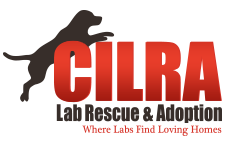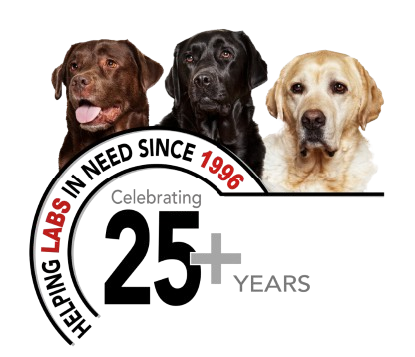About CILRA
About Central Indiana Lab Rescue & Adoption (CILRA)
Central Indiana Lab Rescue & Adoption, incorporated in 1996, is an all-volunteer, non-profit organization dedicated to placing purebred Labrador Retrievers into new homes. CILRA currently serves Indiana, Illinois, Minnesota, & the surrounding Midwestern region.
Adoption Process
For a quick overview of our adoption process, click here
- Why adopt a rescued Lab from CILRA?
- What can I do to help CILRA?
- What happens if the adoption doesn’t work out?
- Are the dogs healthy?
- Is there a cost for adoption?
- Do I need a fenced in yard?
- How do I adopt a rescued Labrador Retriever?
- Where do the rescued dogs come from?
Why adopt a rescued Lab from CILRA?
The answer would be why not adopt a rescued Lab from CILRA? Click Here for the “Top 10 Reasons to Adopt a Rescued Dog.”
What can I do to help CILRA?
CILRA simply would not exist without our volunteers and we rely solely on donations. The more volunteers we have, the more dogs we can help. The time involved is completely up to you as to what you are able to provide as every little bit contributes towards a happy ending for a rescued dog. To find out how you can help CILRA by volunteering, click here.
What happens if the adoption doesn’t work out?
CILRA carefully evaluates each dog and each adoptive home to ensure the adoption is the best match possible. However, if an adoption does not work out for any reason, the dog must be returned to CILRA. Fortunately, the services of CILRA are available for as long as the dog lives.
Are the dogs healthy?
CILRA ensures that all vaccinations are current and that each dog receives heartworm testing and preventative heartworm treatment. Additionally, all dogs are either neutered or spayed before they are placed.
Is there a cost for adoption?
CILRA’s adoption donation is $350 for Labs under 12 months old, and $300 for Labs 1 year and older. As a non-profit organization, this is one way we can afford to cover all necessary veterinary and medical expenses for rescued Labs. Adoption donations offset our average veterinary expense of $605 for each Lab we rescue. This includes but is not limited to spay/neuter surgeries, heartworm testing, fecal specimen testing, vaccines, veterinary exams, evaluation and treatment of any issues discovered while a dog is in foster care, as well as heartworm, flea/tick prevention medication, and micro-chipping.
Do I need a fenced in yard?
One of CILRA’s primary concerns is ensuring the safety of each dog. Fenced areas protect Labs from the dangers of traffic, strangers or other animals, as well as offer a safe place for them to play, exercise, and relieve themselves. Dogs’ personalities and families’ circumstances can vary greatly, however, so each situation is evaluated individually. Even with a fenced area, parents must be especially vigilant about letting children open gates or doors which could easily allow a strong Lab to push through. CILRA requires a fence, either traditional or electronic for families with children under the age of 10 years. This is for the protection of both the children and the Lab.
How do I adopt a rescued Labrador Retriever?
After completing an application, a volunteer from CILRA will conduct a “home visit”. It is important for us to know that the new dog is going to a permanent, loving home where all members of the family want a dog, want this particular breed, and are willing to provide a suitable setting. After your home visit has been completed and you have been approved to adopt, we will work to find the best match for you. CILRA is available for help before, during and after the adoption.
Where do the rescued dogs come from?
Labradors are among the most popular breeds, which results in a correspondingly large number of rescue and adoption situations. Some Labs come into rescue from animal shelters, are found as strays or from veterinarians. Many dogs are surrendered to CILRA by owners whose lifestyles have changed or who don’t have space or time for them. All dogs are temporarily placed in CILRA foster homes where temperament and training level are evaluated. Even though obedience training is reinforced in foster homes, professional obedience training can help the dog bond with his or her new owner and is strongly recommended following adoption.We will not accept dogs who have a history of biting or aggression. The typical range of adoptable dogs is 5 months to 10 years of age.

